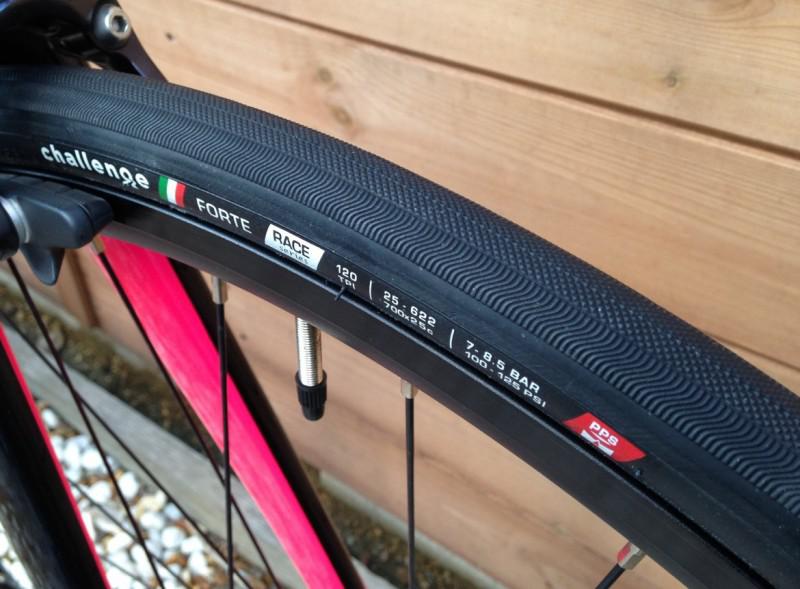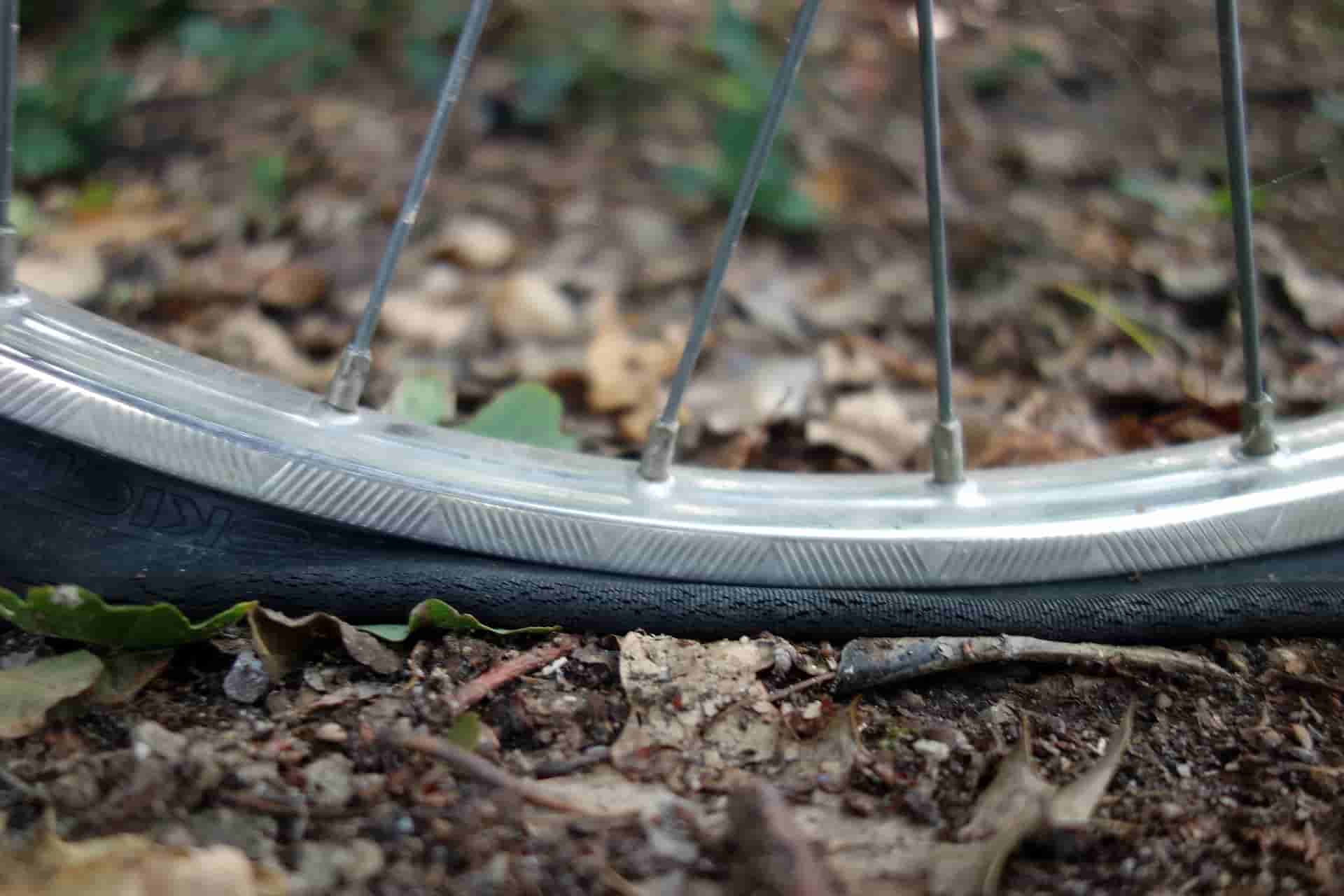The Mysteries of Road Bike Tires
Tubular versus clincher versus tubeless
We should probably start by saying that tubeless tires are a style of clincher tire before the pedants get to us. The biggest difference in road bike tires is if they are tubular or clincher. Tubulars are a one-piece style tire.
You have a tube that is encased inside a rubber tire, and it is then sewn shut. To fit it to a tubular wheel rim you then either have to glue it or tape it to the rim. The benefit of this is that the tire feels very supple when you are riding it.
It also has the added benefit of losing air slowly if you puncture. You may even be able to ride a punctured tub home, slowly though but still home. Your problem here is that you may then need to post it away to artisan tubular guy to get the hole sewn shut.
With a clincher, you would just fit a new tube and carry on. A clincher is a called a clincher as it clinches to your wheel rim as you pump it up to pressure. The tire has a bead at the end of its sidewall, this bead will be steel or Kevlar, and this bead hooks under a flange on the rim of your wheel. The bead makes clinchers heavier than tubs. Tubeless tires also fit on this way.
The main difference between a standard clincher and a tubeless tire is that a tubeless tire is designed to be fitted without a tube. The lack of a tube helps to make a tubeless clincher lighter than a standard clincher.
As it has no tube, you will ten to put sealant in your tires. The sealant will clog and seal any punctures you get when out on the road. You can also ride tubeless tires at lower pressures than a standard clincher because you do not have a tube to pinch flat.
A pinch flat, in case you didn’t know, is when you hit an edge with your tire, and it presses and pinches your tube. A pinch flat will pretty much go down in seconds and going tubeless is a great way to avoid that, which is why all ICAN carbon fiber rims are tubeless ready, except the tubular rims but they may be apparent.
Your new ICAN wheels should come with a rim strip that can be fitted if you want to go tubeless. The strip will stop air escaping through your rim holes and will make going tubeless really easy.
What do the numbers mean on the tire?
Bike tires have been around for a while now, and originally every country had its own system of sizing and measuring tires. Understandably this was a bit of a pain. Eventually, it was agreed to have a sizing system that could be used universally.
The system that was adopted is called the ISO system, the International Organization for Standardization to give it its full title. The method was initially called the "E.T.R.T.O." system, and you may still see that around today. The E.T.R.T.O stands for the European Tire and Rim Technical Organization.
The ISO system uses two numbers. The first number is the width of your inflated tire. If you see the number on a new rim, it is the internal width of your wheel’s rim. The number will be expressed in millimeters.
The second number is the wheel/tire/rim size, and this may confuse you. You will generally see 622, 559, or 584. These numbers may seem particularly meaningless to you until we point out they are the correct measurements of tire sizes minus the marketing terms that the bike trade has used for them.
622 is 700cc or 29”. 559 is 26”. 584 is 27.5” or 650b. It is all fairly simple once you know these numbers and it will be practically impossible to buy the wrong size tube when you know the correct definition of tire size.

You will also hopefully see that your chosen tire manufacturer has also printed the more common name for your tires on the sidewall. With mountain bike tires this will be inches so a 65-584 will be a 27.5 x 2.6” in normal parlance. Some road bike manufacturers might cheat and print 700 x 25 – 622 and that way you get all the variation in a small bit of print.
The other numbers you will see printed or molded into your tires are the pressure numbers. These numbers will be the minimum and maximum amount of pressure you can fit in your tires safely. It is worth making sure your wheel rim will also be able to work with this pressure range.
Do you want to know a simple cheat to make cycling more fun?
Yes?
The answer is wider tires.
Wider tires have often been said to be slower than narrower tires, and this is one of those cycling myths that is now being put to bed. The thinking was that wider tires would have a wider contact patch with the ground than which narrower tires do. You’ll now even find that most of the guys racing Le Tour de France have ditched the old 23mm tires.
The reason for the switch is that wider tires roll faster. The main reason for this is tire deflection. When you are on your bike, your weight pushes your tires down into the road. The flat bit of your tire in contact with the road is called your contact patch.
A wider tire will flatten towards the sides of the tire, and a narrow tire will have a thinner but longer contact patch. The length of this contact patch means that your tire is less round for longer on a narrower tire.
Then if you are running a wider tire, you will likely to be running a lower pressure, especially if you have gone tubeless. This patch will get wider and shorter as pressure goes down. Meaning more of your tire stays round, keeping you rolling faster.
It doesn’t just end here though if you run wider tires on a wider rim, such as the new ICAN Aero series, your contact patch will get shorter again. You will also be a gifted a new aero advantage as the tire and rim will have a smoother transition, keeping the air around your wheels less turbulent.
To take advantage of our Aero rims it is worth making the jump to 700 x 25mm tires. You can oviosly fit 23mm tires but the 25mm tires will have a nicer profile on the rim. You will then benefit from a smaller contact patch and a more aero bike. Marginal gains that will make a big difference to your times.
So now you have gone tubeless, wider, and with lower pressure, you will not only be going faster you will also be more comfortable. 23mm wide tires at over 100psi let you feel every stone on the road. Lower tire pressures and wider tires mean your tires will absorb this shock before it hits you. You’ll be fresher for longer.
When do you need to change your tire?
Tires sadly do not last forever, especially if you ride fixed gear down big hills. If you have been out and have accidentally hit an enormous pothole, you will want to check your tires. You will probably want to this fairly speedily after hitting a big pothole, particularly if you felt the wheel rim take a big hit.
The reason is even if you haven’t lost air your sidewall may be compromised. You do not want a sidewall blowout when you are back at full speed. You really do not want that on your front wheel, you might escape with a blowout at the back, but a front tire blowout is not fun.
If you avoid potholes and ride about considerately have a look at your tire for wear indicators. These usually look like a little circular hole in your tire. When you worn to the end of that pattern it is time for a new tire. You’ll find this takes longer if you live somewhere with straight roads everywhere and a very short time if your ride is full of roundabouts.

If your tire does not have wear indicators look at it front on. It should look round. If it looks square, it is time to replace it. You should have also noticed the effect this has on handling. Going around corners will not feel anywhere near as much fun as it did when your tires were new. You will also very likely be getting repeated flat tires at this point.
How long do you need to pump your tire?
Get into the habit of pumping your tires up every Saturday morning. That might be more often than they need to be pumped, but it means you will always be sure of riding at your correct pressure. It will also give you a chance to check your tires.

As well as checking wear indicators, have a look and see if there is any flints or stones stuck in the tire, remove them before they give you a puncture. Check your tire’s sidewall and make sure it is still healthy. Any cracks on the sidewall and you should be replacing your tires, and it is better than having to replace your teeth.









